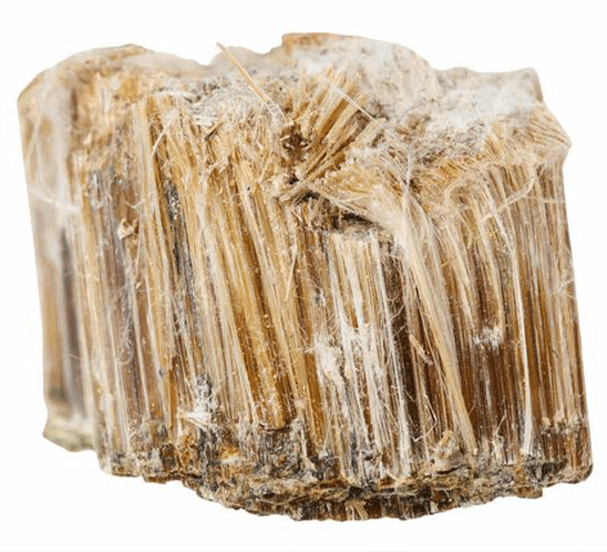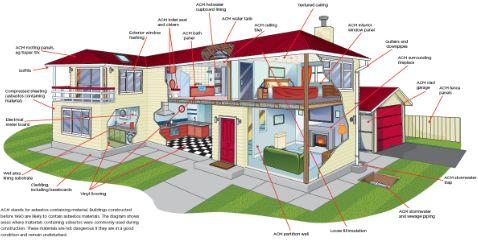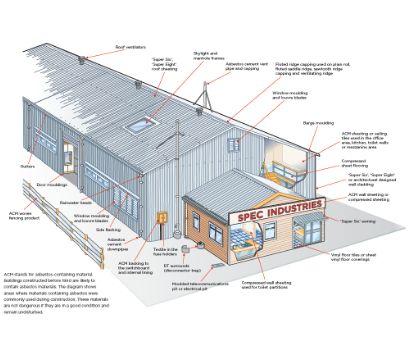Information
Information
Asbestos Information
What Is Asbestos and What Was it Used For?
Technically speaking, asbestos is a fibrous amphibole, which means it is a type of mineral. It has excellent fire-resistant properties, so it was used in the past to make materials fireproof.


Why Asbestos is Dangerous
Asbestos, once hailed as a versatile and fire-resistant miracle material, eventually revealed its dark side. Its microscopic fibers, when inhaled, can lead to severe health issues such as lung cancer and mesothelioma. The ongoing battle against asbestos involves meticulous identification, safe removal, and strict regulations to safeguard human health and prevent further exposure to this silent killer.
Some other asbestos-related words you might come across include:
Amphibole
A mineral that belongs to the amphibole group of substances
Chrysotile
This green or grey fibrous mineral was an important source of commercial asbestos.
Tremolite
Another mineral that is part of the amphibole group and was used as a form of asbestos.
Asbestos Facts
Asbestos is an umbrella term that covers a family of minerals. It is naturally occurring and is found in metamorphic rock, including serpentinite. Asbestos also has several natural characteristics that, in the past, made it an attractive material for various industries, including construction and the manufacture of construction materials. Most notably, asbestos is strong and has elevated levels of heat resistance, giving it fireproof properties.
These properties meant that asbestos was used to manufacture insulation, fireproofing materials, and heat-resistant clothing. It was also used in the form of an additive in the manufacture of a range of other products. This is because it made items like floor tiles, ceiling finishes, and mastics easier to manufacture and apply.
Asbestos is no longer used in any form because of the harm it can cause to human health. It is only dangerous, however, when the material containing the asbestos is disturbed, causing asbestos fibres to be released into the air. It is the inhalation of these fibres that poses a risk to health. In other words, if the asbestos in your property is in good condition and is not being disturbed, it is likely to be safe. Construction and similar works, however, can cause a disturbance, so it is usually safer to have the asbestos professionally removed and disposed of.
Types of Asbestos Containing Materials
There are two main types of asbestos-containing materials in New Zealand
Friable Asbestos-Containing
Materials
Friable asbestos-containing materials contain over 1% asbestos. They are materials that can be reduced to a powdery substance with hand pressure. Plaster, acoustic tiles, and duct wrap are examples.
Non-friable Asbestos-Containing
Materials
Non-friable asbestos-containing materials also contain a hard binder, such as vinyl or cement. Asbestos fibres are released into the air when this type of material is drilled, cut, crushed, etc.
Where Can Asbestos Be Found?
These are the items identified in the images above

Residential house

Industrial building
The two images below show the location of some commonly found asbestos-containing materials.
If your home or commercial building was constructed before 1990, it is likely to contain asbestos, as asbestos was a commonly used material during construction. It is important to remember that these materials are not dangerous if they remain undisturbed and are in good condition.
Industrial building
- Roof ventilators
- ‘Super Six’, ‘Super Eight’ roof sheeting
- Skylight and manhole frames
- Asbestos cement vent pipe and capping
- Fluted ridge capping used on plain roll, fluted saddle ridge,
- sawtooth ridge capping and ventilatiing ridge
- Window moulding and louvre blades
- Barge moulding
- Asbestos cement downpipes
- Side flashing
- Window moulding and louvre blades
- Rainwater heads
- ACM sheeting or ceiling tiles used in the office area, kitchen, toilet walls or mezzanine area
- Compressed sheet flooring
- ‘Super Six’, ‘Super Eight’ or architectural designed wall cladding
- ACM wall sheeting or compressed sheeting
- Compressed wall sheeting used for toilet partitions
- Moulded telecommunications pit or electrical pit
- DT surrounds (disconnector trap)
- ACM backing to the switchboard and internal lining
- Asbestos cement downpipes
- Gutters
- ACM woven fencing product
Residential house
- Vinyl flooring
- Cladding, including baseboards
- Wet area lining substrate
- Electrical meter board
- Compressed sheeting (asbestos containing material)
- Soffits
- ACM roofing panels, eg Super Six
- Exterior window flashing
- ACM toilet seat and cistern
- ACM bath panel
- ACM hotwater cupboard lining
- ACM water tank
- ACM ceiling tiles
- Textured ceiling
- ACM interior window panel
- Gutters and downpipes
- ACM surrounding fireplace
- ACM clad garage
- ACM fence panels
- ACM stormwater trap
- ACM stormwater and sewage piping
- Loose fill insulation
- ACM partition wall
Asbestos and the Law
Here are some helpful links regarding asbestos regulations
and managing asbestos.
